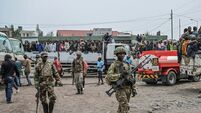Rita's victims are wealthier than Katrina's
Most of Rita's victims are by no means wealthy. But they are less likely to live in poverty, more likely to own a car, and less likely to be a member of a minority group than were Katrina's victims.
Experts said the wealth and mobility of people in Rita's path - combined with a new sense of urgency following Katrina - led to a more thorough evacuation.














